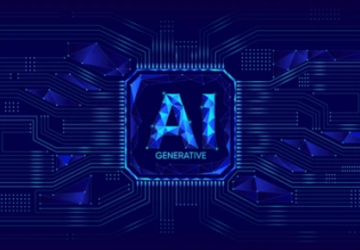Are 2D/3D plans truly essential for designing an industrial product? This seemingly odd question warrants in-depth reflection at a time when complexity is becoming a clear hindrance to the management of industrial projects: imprecise and partial representation, lack of context, limited simulation, difficulties in sharing and updating… to name but a few challenges linked to the use of plans.
The emergence of digital technologies such as collaborative twins could assist industrial companies in overcoming these challenges. By providing an accurate, interactive, and dynamic representation of industrial products, these technologies not only allow a better understanding of the product but also a more efficient and collaborative management of information. A spotlight on a paradigm shift in the industry.
2D/3D blueprints: an imprecise and partial representation.
2D/3D plans provide an imprecise and partial representation of reality: imprecise because they don’t capture the product in all its complexity, and partial because they don’t contextualize the product in its environment.
Grasp the complexity and dynamics of an industrial product.
Representing an industrial product in all its complexity is a significant challenge. Despite the undeniable utility of 2D/3D plans, they often fail to accurately convey the many details of a product, whether it’s about its various components, how they interact, or their operation.
Take the example of an airplane engine: this complex system consists of about 20,000 components. On a 2D plan, it’s almost impossible to represent all the parts of the engine and their relative positions to each other. Under such conditions, grasping the overall structure and operation of the engine becomes difficult.
3D modeling offers a more “realistic” view of the product but fails to illustrate how the parts interact with each other, the airflow through the compressors, the aerodynamic and thermal phenomena occurring in the combustion chamber, etc. Even though 3D plans represent a significant advancement for industrial design, they do not capture the complexity and dynamics of a product.
Furthermore, 2D/3D plans do not provide a spatial perception or immersion comparable to what physical models or virtual reality offer. Even with a 3D plan, one cannot “walk around” inside the product, see it from all angles, or intuitively understand its operation.
For instance, in the case of maintenance operations on an energy production site, technicians cannot solely rely on 2D/3D plans to plan their intervention. Indeed, these tools do not allow for spatial projection and visualization of access or assembly constraints, unlike a digital twin or virtual reality immersion.
Contextualize the industrial product in its environment.
The operational reality of an industrial product is not limited to its physical structure alone. It is essential to consider the environment in which the product will operate, that is to say the real conditions of use and the interactions with other systems. However, 2D/3D blueprints do not provide the information to contextualize the product.
Having only 2D/3D blueprints without contextual information is like knowing the map, but not the territory: the industrial product is designed without a real grasp of reality. This partial blindness can lead to consequences on the product’s performance and reliability, and result in delays (and therefore, budget overruns).
Take the example of a merchant ship. On a 2D/3D blueprint, this ship is usually represented in isolation, without taking into account the environmental conditions in which it must navigate. Yet, a merchant ship does not sail in a vacuum. It has to face waves, wind, and ocean currents. It also has to interact with other systems: ports, navigation channels, maritime traffic, and so on.
Without this contextual information, a 2D/3D blueprint of the ship provides only a partial and potentially misleading image of its operational reality. How will the ship behave in rough seas? How will its navigation system interact with the maritime traffic control system? What challenges will it face when docking at a particular port? All these questions remain unanswered with just a 2D/3D blueprint.

Industrial information management: a productivity factor not to be overlooked.
2D/3D plans: a source of risks and inefficiency
Information management is a critical factor for the success of an industrial project. However, 2D/3D plans make this process particularly challenging and lead to a significant increase in the risk of errors, inconsistencies, and information loss.
Saving time in information processing.
Managing industrial information based on 2D/3D plans involves many manual tasks: integrating changes, exporting and transmitting files, copying information, etc. These tasks are time-consuming and affect the overall project: indeed, the time spent on them is not dedicated to more productive activities, such as design, production, or problem-solving. Moreover, changes made to a plan can lead to manual adjustments on many other associated plans, thereby increasing the processing time and the risk of errors.
Reduce the risk of error or misinterpretation.
One of the major pitfalls of using 2D/3D plans is the risk of error or misinterpretation of information during the transmission and copying of files. Whether it’s dimensions, materials, or assembly procedures, information that is not conveyed or misunderstood can compromise the product’s performance or even its safety, not to mention the costly adjustments in time and resources that this can entail.
Eliminate the risk of version desynchronization.
An industrial project leads to countless revisions of 2D/3D plans, which requires good synchronization of versions to ensure stakeholders are working on the most up-to-date version. Indeed, an outdated version of a plan can easily result in serious consequences for the progress and final cost of a project.
For example, if a design team makes a change to a plan but this modification is not properly communicated to the production team, the latter might continue to produce parts based on the old version of the plan. When the error is detected, the correction can lead to significant delays and additional costs, not to mention the deterioration of the relationship between the teams.
The collaborative digital twin: an alternative to blueprints.
The collaborative digital twin provides concrete solutions to the problems posed by traditional 2D/3D plans. A virtual representation of a product or industrial system, the digital twin not only incorporates its physical complexity but also its operational dynamics and environment.
With a digital twin, it’s possible to grasp an industrial product in all its complexity. The smallest details are accessible and observable from different angles, making it easier to understand the interactions between each element and their behavior in the overall functioning of the product.
Moreover, the digital twin facilitates immersion into the product or system and thus provides a deep understanding of it, far beyond what 2D/3D plans can offer. Indeed, beyond the physical dimensions of the product, the digital twin integrates crucial contextual data to model the product’s interactions with other systems and simulate its operation under specific conditions.
Furthermore, a collaborative digital twin is a valuable asset for information management. Stakeholders make their additions and enrichments, which are then visible to everyone. No more need to worry about synchronizing plans: the digital twin is always up-to-date. There’s no longer a need to communicate countless versions of the plans to teams; the digital twin serves as a single persistent reference, thus reducing the time spent on manual information processing and the risk of resulting errors.
En conclusion, malgré leur rôle fondamental dans la conception industrielle, les plans 2D/3D présentent des limites significatives : ils offrent une représentation imprécise et partielle des produits, engendrent des risques d’erreur, d’incohérences et de perte d’information. De plus, ils nécessitent un travail manuel considérable pour leur mise à jour et leur synchronisation.
Les jumeaux numériques collaboratifs émergent comme une solution innovante, en intégrant la complexité, la dynamique et le contexte des produits industriels. Ils offrent une gestion de l’information plus efficace et favorisent une meilleure collaboration entre les parties prenantes. Leur adoption généralisée pourrait révolutionner la manière dont nous concevons, fabriquons et exploitons les produits industriels, rendant l’industrie plus performante, plus sûre et plus innovante.
Better understand the possibilities of SmartShape?
Schedule a demo

